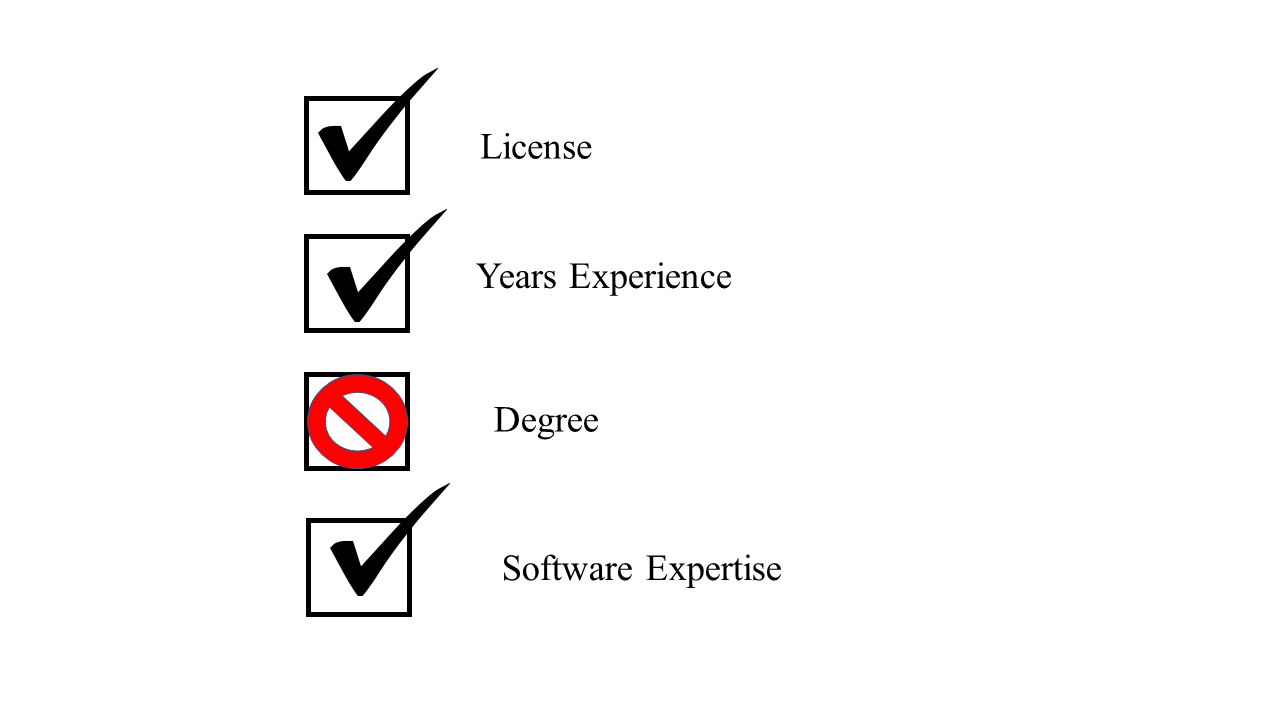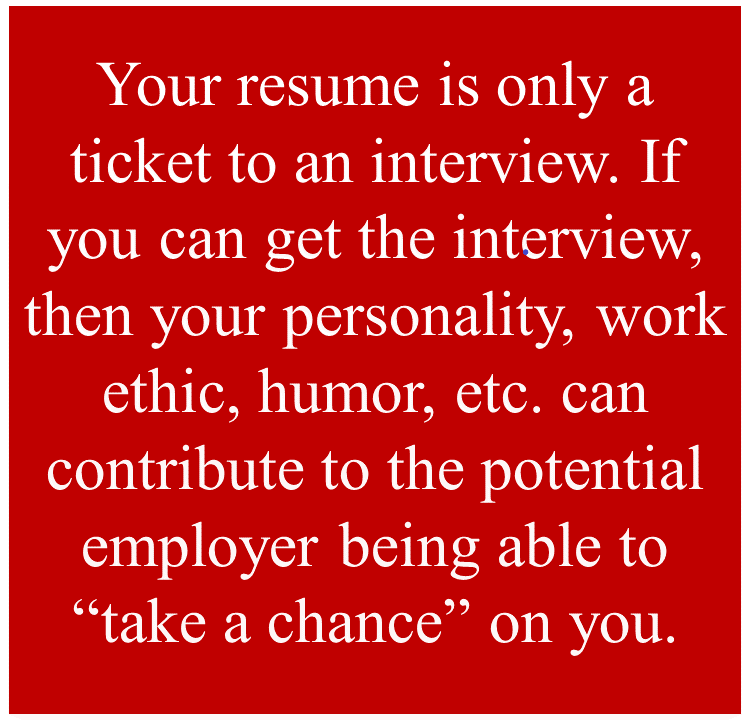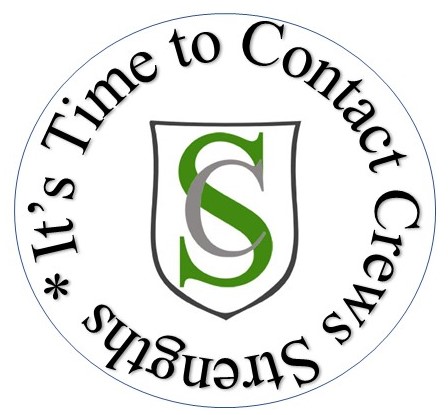Blog
“It’s Time to Put Your Resume to Work” : Part 7: What to Do When You Don’t Meet All the Requirements

Ok. You’ve reviewed all the good stuff in the “It’s Time to Put Your Resume to Work” series. If not, you really should.
You’ve used the a la carte resume process to match the job listing. Your ready to send that resume to get that interview, to start the next chapter of your career. But there are a couple of requirements on the job listing that you don’t exactly meet.

What if You Don’t Meet All of the Requirements in a Job listing.
Should you apply for a job, if you do not meet all the requirements in a job listing?
Without equivocation, the answer is YES!
Ok, maybe not all the time. For instance, if the listing is for a neurosurgeon and you’re your highest degree is a bachelor’s in finance, please do not apply. But if a particular degree is required, and you do not have that degree, but have worked in that area for several years and successfully performed most of the other tasks in the job description, you could be the best candidate.

Here is where the connect the dots comes into play. If you do not meet a particular requirement, then address the issues in your cover letter. “While I am not a graduate of the Clown College, I have the heart, squirting flower and shoes of a clown. I have been juggling since I was 10 years old. My makeup is registered with Clowns International.” Here is a real life story about a client of mine: A job “required” a chemical engineering degree and the candidate applying had a mechanical engineering degree. The candidate literally met every other requirement but had to get around the degree issue. He ultimately did get the job and has thrived in it ever since.
So, why does the job listing have a requirement that isn’t that important? First, from the outside, you have little idea how important any requirement actually is to doing the job. Job listings are sometimes created by people who have no idea what the job requires. Job listings may be created using earlier job listings. Then, more requirements are added, but earlier ones are seldom removed even if no longer germane. Sometimes HR staff are given less than complete information and may be flying blind when they throw together a job listing. Sometimes everything they would like to get is not possible to find in a single human being. Rule of thumb, apply if you think you can love doing what the job is, not necessarily what the job listing says.
You do not know how your skills compare to those of the other people applying for the job. You just might be impressive enough that they will take a chance on being able to teach you to do whatever it is that you don’t have experience doing.
Addressing what you lack head-on can work wonders. It can be very helpful in the resume or the cover letter to show them how quickly or effectively you learned some other skill in a previous position. Use statements like, “While I do not have experience in making felt hats, I am recognized for my skill and fashion sense creating silk purses from sows’ ears. I am confident that the similarities between the two will mean I am able to master hat making in a matter of weeks rather than months”. This can help them connect the dots to think of you succeeding in this position.
As I’ve expressed repeatedly in this series, your resume is only a ticket to an interview. If you can get the interview, then your personality, work ethic, humor, etc. can contribute to the potential employer being able to “take a chance” on you.
Should I be using a Cover Letter?
Cover letters initially existed to personalize generic resumes. Back in the Stone Age, before computers became ubiquitous, you created a single resume which you would submit for a variety of jobs. You typed it on a typewriter (early analog publishing tool). Editing was limited and arduous. You took a master document to a print shop who printed it on beautiful, watermarked, heavy bond paper and submitted it to every potential employer. You submitted it with a cover letter which allowed you to spin your generic resume to make it, as closely as possible, respond to the relevant job listing.
If you’ve read the previous installments of “It’s Time to Put Your Resume to Work”, you’re aware that I only recommend the “universal” resume as a tool for situations like job fairs. Using the a la carte resume system, explained in part 3 of the series, means you should have a customized resume to respond to each job listing directly.
With that in mind, do you still use a cover letter? The answer is yes, if you have the opportunity. When you mail or hand deliver a resume, always have a cover letter. Some online systems may not call it a cover letter, but frequently have a place for submitting additional documents.
The cover letter allows you to do several things that your resume alone will not.
- Show that you have decent manners by thanking the recipient for taking a look at your resume. That is an opportunity for creating a personal connection.
- As described above, you can address any issues like requirements you don’t quite meet and spin them into positives about how you will still be awesome.
- Express and explain your interest in the position. “Since I sailed to Europe on the HMS Neversail as a ten-year-old, I have dreamed of working for ZYX Maritime. That desire remains to this day and is increased when I consider the opportunity this position as an engineer represents”. It is hard to express that sort of enthusiasm in a resume alone.
- Mention your connection to one or more star employees of the company. “Joe Bloggs, lead auditor in your accounting department, is very familiar with my work having supervised and mentored me from 2016 to 2019.” Obviously, discuss this with Mr. Bloggs before referring to him in your cover letter.
- Highlight how well you do meet some of the requirements. This can be an additional way to get that information front and center.
- You must tell them you are very interested in the job. Be enthusiastic from the beginning. Tell them why you are so interested whether it is because of the company’s great reputation or the nature of the work they are noted for doing or because of their latest product. All of those things also indicate familiarity with the organization.
With most organizations using digital submission of resumes, it is easy to think that a human being is never looking at your information. Remember, a vast majority of companies in the U.S., at least, have fewer than 20 employees and still look at what potential employees send them. Always act as if a person is seeing your resume and cover letter and treat them with respect and courtesy. Expend the energy to win them over, to get that interview.

Keep a cover letter short, sweet and to the point. It is a part of your resume package therefore it’s purpose is to get you an interview. Three to four paragraphs should be enough.
Here is a format to consider:
- Paragraph 1. Introduce yourself. Advise the title of the position you are applying for and state a good reason you should be considered.
- Paragraph 2. Highlight the two or three items in your resume which best align you with the job listing. This is also the right place to include, if necessary, your admission of something you lack with a clear explanation of how you will deal with it. “While I do not read Sanskrit fluently, during my tenure at the Metropolitan Museum, I was able to learn to translate hieroglyphics at a Class II level in approximately 18 months.” Admit the problem and solve it within a sentence. Magic.
- Paragraph 3. Reiterate your interest in the job with a reason why it is the work you were put here to do. Close with something like, “I look forward to having the opportunity to discuss my qualifications and vision for this position with you at your first convenience”.
There is no guarantee that you will get an interview, but this approach improves the possibility that you will be considered as a potential candidate.
It’s Time to Put Your Cover Letter to Work!
___________________________________________________
The suggestions and advice given in the articles about resumes provides a lot of information to help you put your resume to work. Please let me know if you have found it helpful. To make sure others have access to this valuable information, please go back to this article in LinkedIn and like and comment on the actual post where the most people are likely to see it. Thanks for your kindness.
If you need help with your resume, your job search or in putting your Strengths to work, please contact Crews Strengths at https://www.crewsstrengths.com/pages/contact.html .
_____________________________________________________
There is still more to come on resumes and Strengths and the whole job search experience.
If you need to catch up on the earlier posts in this series, here is the way to get to that valuable content:
- Part 1 – Background information about resumes.
- Part 2 – Parts of a resume and what information ought to be in them.
- Part 3 – The a la Carte Resume or customizable resume, a method to quickly create a resume that responds to the “demands” of any job listing.
- Part 3a – BONUS short post about the proper length for a resume
- Part 4 – Discover the potential employer’s language and then use it in your resume.
- Part 5 – Creating a Universal Resume (when you don’t have All the Facts.
- Part 6. Avoiding the Mundane, Boring, and Useless in your resume.
Previous Posts
- “It’s Time for You to Ask the Questions!” - August 8, 2024
- What “Superpowers” are Hiding in Your Toolbox?: - May 29, 2024
- It’s Time to Put Your Strengths to Work for Your Interview – Part 4 - October 16, 2023
- It’s Time to Put Your Strengths to Work for Your Interview – Part 3 - August 21, 2023
- It’s Time to Put Your Strengths to Work for Your Interview – part 2 - July 20, 2023
- It’s Time to Put Your Strengths to Work for Your Interview - June 22, 2023
- It’s Time to Put Your References to Work - February 14, 2023
- It’s Time to Work Around Your Weaknesses - November 15, 2022
- It’s Time to Put Your Skills, Talents, Strengths (and even Weaknesses) to Work! (Once you figure out what they are). - October 13, 2022
- It’s Time to Put Your Strengths to Work: Why Hire a Coach? - August 1, 2022
- It’s Time to Put Your Strengths to Work: Rejection and the Job Search - June 25, 2022
- No One Deserves to HATE Their Job! : Your Solution to the “Great Resignation” - May 23, 2022
- It’s Time to Put Your Strengths to Work: Strengths and the Reentry Career Alliance Academy - March 3, 2022
- It’s Time to Put Your Resume to Work: Part 11. An Inventory of Your Career: Resume as Assessment - February 3, 2022
- Have Yourself a Merry Little Job Search: - November 23, 2021
- It’s Time to Put Your Resume to Work: Part 10. - October 21, 2021
- It’s Time to Put Your Resume to Work: Part 9 – Avoiding the Trash - August 25, 2021
- It’s Time to Put Your Resume to Work: Post 8. How Dressed Up Does Your Resume Need to Be? - July 20, 2021
- “It’s Time to Put Your Resume to Work” : Part 7: What to Do When You Don’t Meet All the Requirements - June 24, 2021
- “It’s Time to Put Your Resume to Work”: Part 6. Avoiding the Mundane, Boring, and Useless - May 26, 2021
- “It’s Time to Put Your Resume to Work”, Part 5 – Creating a Universal Resume (When you Don’t have All the Facts) - May 5, 2021
- “It’s Time to Put Your Resume to Work” – Part 4: Finding the Words (literally) - April 7, 2021
- BONUS – “It’s Time to Put Your Resume to Work”- Part 3a : What is the Correct Length for Your Resume? - March 25, 2021
- “It’s Time to Put Your Resume to Work”- Part 3 : The a la Carte or Customizable Resume - March 16, 2021
- It’s Time to Put Your Resume to Work – part 2 - February 9, 2021
- It’s Time to Put Your Resume to Work – part 1 - January 27, 2021
- Strengths Help You Hear the Music - October 20, 2020
- StrengthsFinder & the Ancient Philosopher - September 3, 2020
- StrengthsFinder Domains: A View of Your Strengths from 50,000 Feet - July 20, 2020
- Talents are Your Edge in a Job Search - June 25, 2020
- This Is Who You Are and That’s A Good Thing - May 22, 2020
- Introvert or Extrovert: A CliftonStrengths view - May 13, 2020
- Is It Time to Put Your “Superpowers” to Work? - April 10, 2020
- Who Are You? - April 3, 2020
